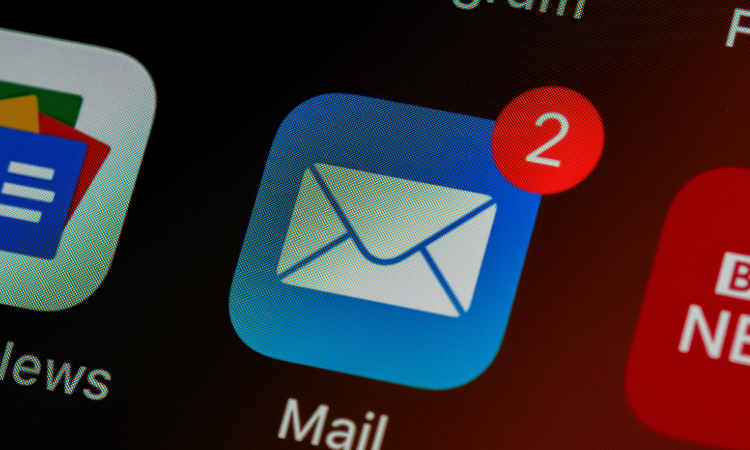You’ve likely heard of the basic NPS question: “How likely are you to recommend us to a friend on a scale from 0 to 10?”
This loyalty question is not enough to gauge customer loyalty; hence, measuring customer loyalty through the best NPS tool becomes essential.
The right tool enables you to create effective NPS questions to gather valuable data, uncovering the “why” behind each response. When done right, these questions reveal what keeps customers loyal, what pushes them away, and how you can improve their experience.
Simply put, effective NPS questions transform raw scores into actionable insights.
And this is what we are going to cover in this blog along with practical examples to guide you in creating surveys that deliver real insights. You’ll also discover when and where to ask these questions to maximize response rates and impact.
Let’s dive into how NPS questions can help you connect with your customers and drive lasting loyalty.
TL;DR
-
Net Promoter Score (NPS) measures customer satisfaction and loyalty and gauges their willingness to recommend your business.
-
NPS surveys consist of a rating survey question and a follow-up question, allowing for a comprehensive understanding of the likelihood of customers to recommend your business.
-
Different scenarios, such as evaluating your overall business (rNPS), specific products, customer interactions (tNPS), or employee engagement (eNPS), can be effectively addressed with customized NPS survey questions tailored to your goals.
-
You can use Zonka Feedback to streamline the process, ensuring timely and meaningful actions based on the NPS response that you receive. To understand how Zonka Feedback can help you create, send, and measure Net Promoter Score, sign up for a free 7-day trial or schedule a demo.
Use Customizable Templates to Measure Customer Loyalty
Create NPS surveys with AI, measure customer loyalty, and close the feedback loop effectively with Zonka Feedback.

What is the NPS Survey Question?
The NPS survey question is a straightforward tool for measuring customer loyalty. It asks, “How likely are you to recommend our product/service to a friend or colleague?” Customers respond on a scale from 0 to 10, with 0 meaning "not at all likely" and 10 meaning "extremely likely."
Each response category provides valuable insights:
-
Promoters (scores 9-10) are loyal, enthusiastic customers who actively advocate for your brand, spreading positive word-of-mouth.
-
Passives (scores 7-8) are generally satisfied but not enthusiastic; they’re vulnerable to competitors, making them a key group to engage.
-
Detractors (scores 0-6) are dissatisfied and may share negative feedback, highlighting areas where improvements are needed.
You can also calculate the gathered NPS feedback by using this free NPS calculator. Now let's look at the importance of the right survey questions.
Why is the NPS Survey Question Important?
Research shows that a 7% increase in NPS can correlate with a 1% increase in revenue. This highlights companies with higher NPS scores growing faster and positively impacting revenue. For instance, if a company with a $100 million annual revenue raises its NPS from 30 to 37, it could see an additional $1 million in annual sales.
While results may vary based on industry, customer base, and retention, the value of NPS survey questions for understanding customer loyalty and driving growth is clear.
However, predictive growth is only part of the value. Here’s why NPS survey questions are essential to your feedback strategy:
-
Identify Customer Types: NPS divides customers into NPS Promoters, NPS Passives, and NPS Detractors. This segmentation allows you to reward Promoters, address Passives to prevent churn, and resolve issues for Detractors.
-
Gain Detailed Insights with tNPS and rNPS: Transactional NPS (tNPS) measures specific interactions (like a product launch), while Relationship NPS (rNPS) assesses overall loyalty. These insights highlight areas for improvement, such as a complex checkout (tNPS) or unmet expectations (rNPS), enhancing the customer experience.
-
Benchmark and Track Performance: Compare your NPS to industry standards to see where you stand. If your score is lower, use this insight to develop improvement strategies and allocate resources effectively.
-
Understand Drivers with Follow-Up Questions: Follow-up questions reveal why customers gave specific scores. For example, a Detractor may mention a confusing interface, while a Promoter may praise customer service. This feedback helps you address pain points and enhance positive experiences, leading to more loyal customers.
Considering these reasons, let’s look at the sample NPS survey template to enhance customer satisfaction and loyalty.
NPS Survey Questionnaire Example to Drive Customer Insights
Here's a standard NPS survey template that consists of the standard NPS question and an open-ended question to let customers share their answers in their own words. You can always customize the NPS survey templates and get specific feedback, for example, the likeliness of your customers to recommend you based on customer support.
While conducting an NPS survey, various important factors are responsible for its success. One among them is the phrasing of the Net Promoter Score question and the follow-up question.
What does an NPS Survey Question include?
The Net Promoter Score survey typically includes two questions. Both questions are crucial to gathering a balanced view of customer feedback, making it actionable and meaningful. These include:
- Core NPS question asking customers to rate, on a scale of 0-10, providing quantitative insights into customer loyalty and satisfaction.
- Open-ended question to know the “why” behind the user's score, capturing qualitative insights, helping you understand specific drivers of loyalty and areas for improvement.
Types of Net Promoter Score Surveys
NPS surveys come in two main types, each designed to capture unique aspects of the customer experience:
1. Relationship NPS (rNPS) Survey
A Relationship Net Promoter Score (rNPS) survey measures overall customer satisfaction, providing a high-level view of brand health. By automating periodic rNPS surveys, you can track trends in customer sentiment and gauge the impact of customer-focused initiatives.
Use rNPS surveys for:
- Regular Check-Ins: Conduct quarterly or biannual surveys to monitor customer sentiment and address issues early.
- A sample rNPS question looks like this: How likely are you to recommend our company to others based on your overall experiences with us?
- Brand Perception: Understand customer views of your brand beyond individual interactions.
- A sample rNPS question looks like this: How likely are you to recommend our brand to others, considering your overall impression of our company?
- Account Management: For B2B, measure satisfaction among key accounts to strengthen relationships.
- A sample rNPS question looks like this: How likely are you to recommend us as a long-term business partner to others within your industry?
- Product Lifecycle Feedback: Gather customer feedback at different product stages, such as after major updates.
- A sample rNPS question looks like this: Considering your experience with our product over time, how likely are you to recommend it to colleagues or friends?
2. Transactional NPS (tNPS) Survey
Transactional Net Promoter Score (tNPS) surveys are designed to capture customer feedback right after key interactions—such as a purchase, upgrade, or delivery. Placing these surveys at critical touchpoints throughout the customer journey helps identify Promoters, Passives, and Detractors at each stage, allowing for targeted improvements that enhance customer satisfaction and loyalty.
Key moments to deploy tNPS surveys:
-
Post-Purchase Feedback: Assess customer satisfaction with the purchase process and product expectations.
- A sample tNPS question looks like this: Based on your recent purchase, how likely are you to recommend our products to a friend or colleague?
-
Delivery and Fulfillment Satisfaction: Measure satisfaction with delivery speed, order accuracy, and fulfillment quality.
- A sample tNPS question looks like this: How likely are you to recommend us based on your delivery experience?
-
Customer Service Quality: Gauge customer satisfaction after support interactions to refine service quality.
- A sample tNPS question looks like this: After your recent interaction with our support team, how likely are you to recommend us to others?
-
Product Usage and Experience: Collect feedback after first-time product use to understand usability and initial impressions.
- A sample tNPS question looks like this: How likely are you to recommend our product based on your initial experience using it?
3. Employee NPS (eNPS) Survey
How loyal and engaged is your team?
Gauge it by launching the Employee Net Promoter Score (eNPS). This simple tool provides insights into employee health and satisfaction—crucial for retaining top talent and fostering a positive work environment.
Here’s how eNPS insights can drive impactful improvements:
-
Lower Turnover Costs: A good NPS score indicates loyalty, reducing turnover expenses. Engaged employees bring added value, often delivering better customer service and strengthening your brand.
- A sample eNPS question looks like this: On a scale of 0-10, how likely are you to recommend our company as a place to work to others?
-
Strengthen Company Culture: eNPS insights reveal areas to enhance, like recognition, growth opportunities, or work-life balance, creating a workplace where employees thrive.
- A sample eNPS question looks like this: How likely are you to recommend our company’s work environment to your friends?
-
Target Key Improvements: Low scores pinpoint areas needing attention. Use this feedback to address concerns with targeted plans, boosting overall engagement.
- A sample eNPS question looks like this: Based on your experience, how likely are you to recommend our company as a place to grow and develop professionally?
With that, let's dive into industry-specific examples for you to make your NPS questions truly effective.
Customizing NPS Survey Questions to Ask with Examples
You can tailor NPS questions to meet your various business processes, from customer support to product development. By customizing questions for specific stages in the customer journey, you’ll gain insights that directly support your goals—whether it’s improving satisfaction, boosting loyalty, or identifying pain points.
Here are some industry-specific examples to see how tailored NPS questions can drive your business.
NPS Survey Questions Examples for the Healthcare Industry
NPS survey questions for the healthcare industry are designed to capture patient satisfaction and loyalty across various stages of the care journey. From the quality of medical services to the efficiency of staff interactions, these questions provide valuable insights that can improve patient experiences and foster long-term loyalty.
Here are some key health survey questions to gather patient feedback:
How likely are you to recommend our clinic to friends and family, on a scale of 0-10? (NPS question)
What did you value most about your healthcare experience with us? (Open-ended question for Promoters)
What improvements could we make to enhance your experience? (Open-ended question for Passives)
Could you please share the issues or concerns that impacted your experience? (Open-ended question for Detractors)
Questions to Ask in NPS Surveys for Retail
By asking targeted NPS questions in the retail industry, you can gather valuable insights on in-store experiences, online shopping, and post-purchase satisfaction. These insights help you understand customer needs, boost loyalty, and proactively reduce churn by addressing specific pain points.
Here are some key retail survey questions to gauge NPS:
On an 11-point scale, how likely are you to recommend our store to a friend? (NPS question)
What did you enjoy most about shopping with us? (Open ended question for happy customers)
What could improve your shopping experience? (Open ended question for passive customers)
We are sorry to see you disheartened. Could you please tell us what went wrong during your visit? (Open ended question for unhappy customers)
Digital Feedback & Apps NPS Survey Questions
For digital platforms and apps, NPS questions are essential for understanding usability, functionality, and the overall user experience. These insights reveal what users love, identify friction points, and guide improvements that enhance engagement and drive user loyalty.
Here are some key NPS survey question examples:
How likely are you to recommend our premium version? (Classic NPS question)
What features do you find most valuable in our app? (Open ended question for brand advocates)
What could make the app more enjoyable for you? (Open ended question for passives)
What made you unhappy and let you go? Please share here. (Open ended question for unhappy customers)
Banking NPS Survey Questions to Ask
In the banking industry, NPS questions are crucial for gauging customer satisfaction across a range of services, from online banking and mobile apps to branch experiences and customer support. These insights help identify service gaps, enhance customer trust, and foster long-term loyalty in a competitive market.
Following are the examples to include creating a successful nps survey:
How likely are you to recommend our bank to a friend or colleague? (Relational NPS survey question)
What aspects of our banking services do you find most valuable? (Follow-up question for promoters)
What could we improve in your banking experience? (Follow-up question for passives)
Could you share any specific issues with our services? (Follow-up question for detractors)
SaaS NPS Survey Questions to Gauge Customer Satisfaction & Loyalty
NPS in SaaS is essential for evaluating customer satisfaction and loyalty at every stage of the customer journey, from onboarding to regular usage. These insights reveal how well your software meets user needs, highlight areas for improvement, and help foster long-term customer relationships.
Here are some key NPS question examples:
How likely are you to recommend our software to a friend or colleague? (Classic NPS question)
What features of our software do you find most helpful? (NPS follow up question for Promoters)
What could make our software more valuable to meet your regular needs? (NPS follow up question for Passives)
Could you share what issues you faced with our software? (NPS follow up question for Detractors)
That's not all. You can also customize the NPS survey questions to meet your business objectives.
Leverage NPS Questions to Achieve Your Key Business Goals
Strategic use of NPS questions goes beyond measuring customer satisfaction; it can directly support your business goals. From reducing churn to improving CLV, NPS questions provide targeted insights to refine your product, strengthen customer support, and increase brand loyalty.
Here’s how you can leverage NPS to drive impactful results across key areas of your business.
1. Reduce Customer Churn
Want to catch unhappy customers before they leave?
The NPS question helps you spot at-risk customers (scores 0-6) early. This lets you step in, address their concerns, and keep them loyal. Retaining customers is also cheaper than finding new ones, so reducing churn protects your bottom line.
To address customer churn, ask: What’s one thing we could improve to enhance your experience with our company?
2. Improve Customer Lifetime Value (CLV)
NPS can boost CLV by helping you identify and engage two critical customer groups. With targeted strategies, you can maximize revenue potential and build long-term loyalty, turning customer feedback into a catalyst for growth:
-
Cross-Selling to Promoters: Promoters are already fans of your brand, making them ideal candidates for add-ons or upgrades. By identifying these customers, you can offer complementary products or services, enhancing their experience while increasing revenue.
-
Nurturing Unhappy Customers: Unhappy customers aren’t just a risk—they’re an opportunity. Their feedback reveals pain points that, once resolved, can turn them into loyal advocates. A quick follow-up on their concerns shows your commitment and can build lasting loyalty.
3. Optimize Product Development
Are you looking to create products your customers can't wait to recommend?
An NPS survey is there at rescue, focusing on product development to turn valuable feedback into a powerful guide for innovation. By targeting beta testers and early users, you gain insights into functionality, usability, and areas for improvement before a full release. Additionally, you have the added advantage of:
-
Prioritize Winning Features: A Good NPS score on certain features shows what resonates with users, helping you prioritize future development that drives adoption.
-
Improve Underperforming Features: Low scores highlight features needing refinement or possible removal, allowing you to reallocate resources toward high-value improvements.
To optimize the product roadmap, ask: What feature would you like to see added to improve your experience with our product?
4. Enhance Customer Support
Curious how your customer support team impacts loyalty?
An NPS survey lets you uncover key insights to make support a true strength of your brand. Here are some compelling reasons why your NPS survey question can be an effective tool for enhancing customer support:
-
Spot Service Gaps: Low NPS scores reveal issues like knowledge or process gaps. Fixing these weak points helps prevent future customer frustrations.
-
Sharpen Team Skills: NPS feedback highlights areas where additional training—such as product knowledge or communication skills—can empower your team to deliver a standout customer experience.
-
Celebrate Top Agents: High NPS ratings and positive comments identify top-performing agents, allowing you to reward excellence and inspire the whole team.
This question can help you gather critical feedback to take customer support to the next level: What did you appreciate most about your recent support interaction, and what could be improved?
Now that you know how to leverage NPS questions to gather meaningful insights. Let’s look at how to end your NPS surveys effectively.
End your NPS Survey Question with a Thank You Message
Are you treating your customers right?
66% of customers switch brands if they feel unappreciated. A simple thank you can make all the difference. Ending your NPS surveys with a personalized thank you message shows customers you value their feedback, fostering loyalty. Here’s how to make your thank you messages even more impactful:
- Address Detractor Pain Points: Thank Detractors for their honesty, showing respect for their insights and commitment to improvement.
- For example: Thank you for your honest feedback. We’re committed to improvement and will reach out to better understand your needs.
-
Engage Passives as Partners: Position Passives as collaborators in shaping your product or service.
- For example: Thank you for your feedback. Your ideas are vital as we work to make our product better suited to your needs.
-
Empower Promoters as Advocates: Thank Promoters for their enthusiasm, reinforcing their positive experience and encouraging advocacy.
- For example: Thank you for your enthusiastic feedback! Your insights help us deliver a top-tier experience.
A thoughtful thank-you message makes customers feel valued and strengthens connections across all feedback levels, helping you improve your Net Promoter Score.
Now you must be wondering, where to send the NPS survey, right? Let's dive in here.
Choosing the Right NPS Survey Channels
Sending the net promoter score surveys to the right channel boosts survey response rate. Here are the most commonly used channels:
-
Email: Email surveys are ideal for rNPS surveys, allowing you to reach a broad audience and personalize messages (e.g., quarterly for active customers or post-onboarding for new customers).
-
Website: Website surveys are perfect for tNPS surveys, capturing feedback immediately after actions like purchases. Use pop-ups triggered by user behavior for real-time insights.
-
In-app: In-app surveys are effective for instant feedback on app features or usability after specific actions, like completing a task. Engage users directly within the app to ensure relevance.
-
SMS: SMS surveys are great for short, transactional surveys, such as after a support interaction. High open rates make SMS ideal for quick, time-sensitive feedback.
-
WhatsApp: A versatile channel for both rNPS and tNPS surveys. WhatsApp enables personalized, conversational feedback requests with high response rates due to its convenience and widespread use.
-
Offline: Excellent for in-person feedback at locations like retail stores or events. Set up kiosk surveys or tablets to capture insights on location.
Choosing the right channels and timing enhances engagement, allowing you to gather meaningful feedback and drive actionable insights.
Streamline and Scale Your Entire NPS Program with Zonka Feedback
If you have an extensive customer base, collecting manual feedback would be impractical for your Net Promoter Score methodology. Utilizing a CX survey tool like Zonka Feedback can help in resource optimization, efficient sentiment analysis to improve NPS, and higher returns on customer experience investments.
This is done by maximizing its potential features which offer advanced customer segmentation, sentiment analysis, NPS automation, and closing the feedback loop that works together to make your NPS program a success.
1. Tailor NPS Approach to Target Specific Customers
By using Zonka Feedback, you can segment your customer base using various criteria, creating a more nuanced understanding of their needs and behaviors. This can be followed up by asking the right question using appropriate nps question wording and addressing segment-specific concerns with targeted solutions.
For example, say you run an e-commerce clothing company and you want to improve customer satisfaction and drive repeat purchases. You can start by segmenting your customer base using relevant criteria such as:
-
Purchase History: Frequent Buyers vs. One-Time Purchasers
-
Product Category: Focus on specific categories like Apparel vs. Accessories
-
NPS Score: Promoters (9-10), Passives (7-8), and Detractors (0-6)
This segmentation would allow you to see a more nuanced picture. For example, you might discover that:
-
Frequent Buyers (Apparel): Love the wide selection and fast shipping but might struggle with finding the right size due to limited size guides.
-
One-Time Purchasers (Accessories): Unhappy with the return policy and might have encountered a slow and confusing checkout process.
-
Detractors (Formal Wear): Dissatisfied with the quality of formal wear and might suggest offering more established brands.
With these insights, you can create targeted NPS surveys for each segment:
-
Frequent Buyers (Apparel): Ask about their experience with sizing and offer a solution like implementing a more detailed size guide or a virtual try-on feature.
-
One-Time Purchasers (Accessories): Acknowledge their concerns about the return policy and simplify the return process through the survey. Additionally, inquire about their checkout experience to identify areas for improvement.
-
Detractors (Formal Wear): Express empathy for their experience and ask for specific feedback on the quality issues. Offer them a discount or store credit to encourage a second chance while considering expanding their formal wear brand selection.
By analyzing segment-specific NPS data, you can then develop personalized action plans for each segment:
-
Frequent Buyers (Apparel): Develop a comprehensive size guide with detailed measurements and consider offering a virtual try-on experience to reduce size-related returns.
-
One-Time Purchasers (Accessories): Simplify the return policy by outlining clear steps and offering a pre-paid return shipping label. Additionally, streamline the checkout process by minimizing unnecessary steps or offering guest checkout options.
-
Detractors (Formal Wear): Investigate the quality concerns and potentially partner with more established brands to expand their formal wear selection while addressing the feedback received.
This results in a more positive and engaging customer experience for each segment of your customer base, leading to increased customer lifetime value and a competitive edge in the e-commerce landscape.
2. Automate Your Entire NPS Journey
Manually managing NPS surveys can be time-consuming and inefficient, therefore you must look out for NPS survey tools that offer automation features and empower you to streamline the NPS process. This could include scheduling NPS surveys, triggering NPS surveys based on events, automating across the website and in-apps, and staying updated on feedback and emerging issues with real-time alerts.
For example, if you run a food delivery app and want to improve customer satisfaction and loyalty and ensure a smooth delivery experience, you can utilize online survey tools like Zonka Feedback to automate the NPS process.
-
Schedule NPS Surveys: You can schedule automated NPS surveys to be sent to customers 24 hours after each delivery. This captures fresh memories of the experience and maximizes response rate.
-
Trigger NPS Surveys Based on Events: You can integrate Zonka Feedback with your delivery management system. This allows you to trigger an NPS survey immediately after an order is delivered, capturing real-time feedback on factors like delivery speed and food quality.
-
Automate Website & In-App Surveys: You can also display a short NPS survey within the app upon order completion. This allows customers to provide immediate feedback on the ordering process and user interface.
-
Receive Real-Time Alerts & Notifications: You can get instant alerts to your customer service team whenever a Detractor score is received. This allows for prompt intervention and proactive issue resolution, potentially turning a negative customer experience into a positive one.
This streamlined NPS approach translates to faster issue resolution, improved customer satisfaction, and ultimately, increased repeat business for your food delivery app. You can focus on delivering delicious food and a seamless user experience, confident that you have a system in place to continuously gather valuable customer feedback and make data-driven improvements.
3. Understand Customer Emotions from NPS Survey Responses
By utilizing Net Promoter Score software that allows you to dig deeper into customers' sentiments, you can gain a comprehensive understanding of the emotions driving customer feedback. Customer comments and open-ended feedback hold a wealth of hidden insights. Zonka Feedback's AI-powered sentiment analysis empowers you to go beyond the NPS score and understand the real reason behind the feedback. You can identify the emotions, intent, and urgency in the feedback and uncover key themes for data-driven decision-making.
For example, let's say you run a travel booking platform and want to improve customer experience and drive loyalty. You have shared your NPS survey along with its driver question and you have feedback that looks something like this:
-
Promoter (Score 9): "Amazing experience! The hotel recommendations were perfect, and the booking process was smooth."
-
Passive (Score 7): "The trip was good overall, but the flight options were limited."
-
Detractor (Score 3): "Disappointed! The customer service was terrible when I had to change my flight dates."
From this feedback, Zonka Feedback's AI-powered sentiment analysis would identify the sentiments, intent, and entity of the feedback as:
-
Sentiment Analysis: To assess the tone of customer feedback
-
Promoter: Positive sentiment with words like "amazing," "perfect," and "smooth."
-
Passive: Neutral sentiment with words like "good overall" but also identifies a negative aspect with "limited."
-
Detractor: Strong negative sentiment with words like "disappointed," "terrible," and "change."
-
-
Intent and Urgency: To determine the customer's immediate needs and the priority of their issues
-
Promoter: The intent is to praise the hotel recommendations and booking process.
-
Passive: The intent is to provide constructive criticism regarding limited flight options. There's a mild sense of urgency to improve this aspect.
-
Detractor: The intent is to express dissatisfaction with customer service during a flight date change. There's a strong sense of urgency to address this issue.
-
-
Entity Recognition: Identify specific people, products, or services mentioned in feedback
-
Promoter: AI tags "hotel recommendations" and "booking process" as key entities.
-
Passive: AI identifies "flight options" as a key entity needing improvement.
-
Detractor: AI recognizes "customer service" and "change flight dates" as critical entities for customer dissatisfaction.
-
With such information in hand on your NPS dashboard, you can explore how your travel booking platform can improve services and drive customer loyalty. The subsequent steps would be:
1. Address Pain Points with Urgency
Identify and prioritize critical issues highlighted by customers to enhance their experience and loyalty.
-
Detractor (Customer Service): The strong negative sentiment and urgency surrounding "customer service" and "change flight dates" demand immediate attention. Investigate the cause of the poor experience. Consider offering self-service options for flight changes or improving call center staffing to reduce wait times. Additionally, follow up with the Detractor to apologize and ensure their issue is resolved promptly.
2. Prioritize Based on Sentiment Strength
Focus on the intensity of customer sentiments to prioritize actions and allocate resources effectively.
-
Promoter (Positive Sentiment): Showcase positive feedback about hotel recommendations and the booking process in marketing materials and customer testimonials. This reinforces your strengths and builds trust with potential customers.
-
Passive (Neutral/Mildly Negative Sentiment): The "limited flight options" comment deserves attention but doesn't convey the same urgency as the Detractor's feedback. Explore expanding your flight search engine partnerships or implement filters for a wider variety of flight options based on customer needs.
3. Focus on Customer Intent and Entity Recognition
Understand customer intentions and identify specific entities in feedback to tailor responses and improvements.
-
Promoter: They intend to praise specific aspects of your service. Consider a targeted loyalty program that rewards repeat customers who appreciate these strengths.
-
Passive & Detractor: Their feedback highlights areas for improvement ("flight options" and "customer service"). Focus improvement efforts on these entities based on the identified intent (constructive criticism vs. dissatisfaction).
4. Promote Positive Customer Interactions
By addressing customer concerns and highlighting positive experiences, you create a more positive customer journey. This can involve:
-
Personalized Communication: Reach out to Promoters with appreciation and explore loyalty program options. Respond to Passives with a plan to address their concerns regarding flight options. Proactively address the Detractor's issue and apologize for the inconvenience.
-
Improved User Experience: Implement changes based on entity recognition – expanding flight options or improving customer service response times.
4. Close the Customer Feedback Loop to Boost Loyalty
With Zonka Feedback, you can efficiently and effectively close the feedback loop, ensuring that customer feedback is not only collected but also acted upon. It ensures that every customer feels heard and valued through its automated response system and workflows. With this, you can:
-
Automate Responses: Automatically send a thank-you email to customers as soon as they share their feedback. This immediate acknowledgment reinforces that their input is appreciated.
-
Send Targeted Responses: Automatically send follow-up surveys to Detractors to understand their concerns in detail, or request testimonials from NPS Promoters. This targeted approach shows customers that their feedback directly influences their actions.
-
Get Real-Time Notifications: Automatically notify the relevant team members as soon as specific feedback is received. For example, direct complaints about food quality to the chef, or issues with customer support to the support team.
-
Perform Task Tagging: Tag team members in responses to clarify responsibilities and ensure prompt action. This organization streamlines internal processes and ensures accountability.
-
Take Integrated Actions: Integrate with business software to automate further actions, such as creating or closing customer support tickets based on feedback. This seamless integration enhances efficiency and ensures a holistic approach to feedback management.
With that in mind, let’s dive into the essential best practices for maximizing your NPS impact.
10 Tips to Create the Best NPS Survey Questions
Here are essential tips to help you craft highly effective NPS questions that drive business growth and maximize ROI:
-
Use a Mix of Quantitative and Qualitative Questions: Combine numerical ratings with specific follow-up questions like "What did you find most valuable about our service?" to gather both quantitative and qualitative feedback. This approach provides a comprehensive understanding of customer sentiments.
-
Use Clear and Concise Language: Avoid jargon and complex terms to ensure all customers understand the question, leading to more reliable responses.
-
Personalize the Survey Invitation: Address customers by their name (e.g., "Hi [Customer Name], we'd love to hear from you.") to increase engagement and NPS response rate.
-
Optimize the Timing of the Survey: Send the survey quarterly or annually to capture customers' perspectives and encourage participation.
-
Keep the Survey Short and Focused: Limit the survey to the NPS question and one or two follow-ups to respect the customer's time and reduce abandonment rates.
-
Ensure Mobile-Friendly Survey Design: Use responsive design so the survey displays well on all devices, improving accessibility and completion rates.
-
Avoid Leading or Biased Questions: Use neutral language without suggesting desired answers to ensure honest and unbiased feedback.
-
Segment Your Audience for Customized Questions: Tailor questions based on customer segments (e.g., new vs. long-term customers) to gain insights relevant to different customer journeys.
-
Provide a Genuine Thank You and Next Steps: Include a sincere thank-you message and mention how you'll use their feedback, reinforcing a positive relationship and encouraging future engagement.
-
Test and Refine: Pilot-test your survey questions to ensure they are effective. Gather initial feedback and refine the questions as needed to improve clarity and relevance.
By incorporating these tips into your NPS surveys, you'll gather meaningful feedback that can drive improvements and enhance customer loyalty.
Conclusion
Implementing a successful NPS strategy isn’t just about collecting feedback—it’s about asking the right questions that reveal what truly matters to your customers. Crafting and placing the right NPS questions allow you to gain deep insights into customer sentiment and pinpoint areas that need attention.
By designing relevant NPS questions, automating survey delivery, analyzing customer emotions, and closing the feedback loop with personalized follow-ups, you’re not only improving satisfaction but fostering long-term loyalty.
With Zonka Feedback, you get a suite of features that streamline the NPS process, including survey templates, multichannel NPS survey distribution, automation tools, and centralized data management. This setup enables effective team collaboration and keeps the focus on delivering exceptional customer experiences. Take the next step in your customer experience journey—use the right NPS questions to shape a customer-centric culture, build loyalty, and drive scalable growth.












